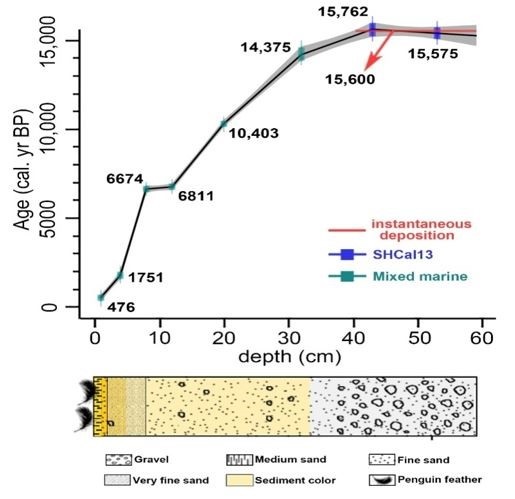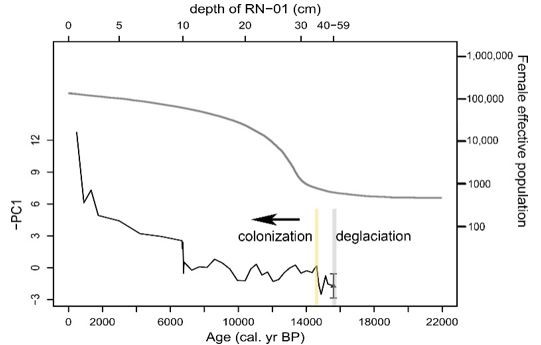Monochrome penguins attract us with its clumsy yet lovely moves and body shapes, but they also attract scientists who studies palaeogeography about Antarctic. Researchers in University of Science and Technology of China (USTC) push the earliest record of Adélie penguin colonies in East Antarctic forward for around 6000 years.
The population history of the Adélie penguin (Pygoscelis adeliae) and its response to climatic and environmental changes have been widely studied in maritime Antarctica and several glacial refugia of Adélie penguins were dated back to the Last Glacial Maximum. However, the process of colony expansion during the subsequent glacial-interglacial transition was less well-documented.
The study reported the oldest geological record of penguin colonization in East Antarctica, East Antarctica. Geochemical analysis of an ornithogenic core from Vestfold Hills suggests penguins started colonizing the northern Vestfold Hills around 146,000 years before present (BP), the oldest geological record in East Antarctica on penguin occupation, and their population exhibited a broadly increasing trend thereafter. The study deduced the deglaciation date, which is earlier than previous records, at the Vestfold Hills and reconstructed local penguin population history using geochemical proxies. Local deglaciation occurred around 15.6 kyr BP, based on a coarse-grained detrital layer, a date that is earlier than most of those reported in other studies from the same region.
Following the last glacial-interglacial transition, the Antarctica experienced the gradual emergence and expansion of ice-free areas, which supported the expansion of breeding sites of the Adélie penguin in the Antarctic. However, most geological evidence of penguin colonies in different areas exhibits discrepancy with the local records of deglaciation history, resulting in little understanding of the colonizing process of penguins following the deglaciation period. In this study, researchers adopted bio-typochemical elements of a lake sediment core from the Long Peninsula in the Vestfold Hills, East Antarctica as the proxy to identify the deglaciation sediment layer aged 15600 years BP (before present) and the penguin ornithogenic sediment layer aged 14600 years BP. Their results indicated that penguins colonized approximately 1000 years after the ice cap retreat, which followed by a consistent expansion of the population. It suggests that ice retreat during glacial-interglacial transition is a major incentive of the growth of penguin population and the expansion of penguin colonies, which was likely to strongly affects the occupation history of breeding sites of seabirds in the polar regions. This study initiates the investigations of reconstructing the time of penguin colonization in ice-free areas in the Antarctic, which delivers important objectives of searching for the sanctuary of penguin during the last glacial-interglacial transition and developing further insights into the process and principles of penguins’ migration to the surrounding regions in the Antarctic continent.

Bayesian age-depth model and lithology of core RN-01.

Reconstructed local and regional penguin population change during the last ~ 20 kyr
(Image from the paper)
GAO Yuesong, a PhD candidate from the School of Earth and Space Sciences, is the first author of the article. Professor SUN Liguang, Professor XIE Zhouqing and Researcher WANG Jianjun are the corresponding authors.
This study was funded by the Chinese Polar Environment Comprehensive Investigation & Assessment Programs, the International Cooperation in Polar Research and the Natural Science Foundation of China. It was also supported by the Australian Antarctic program via Australian Antarctic Science Projects. All field procedures were approved by the Australian Antarctic Animal Ethics Committee.
The study has been published in Palaeogeography, Palaeochimatology, Palaeoecology, see more at:
https://www.sciencedirect.com/science/article/pii/S0031018217305345
Contact:
Professor XIE Zhouqing
Institute of Polar Environment & Anhui Key Laboratory of Polar Environment and Global Change, School of Earth and Space Sciences
E-mail:
zqxie@ustc.edu.cn